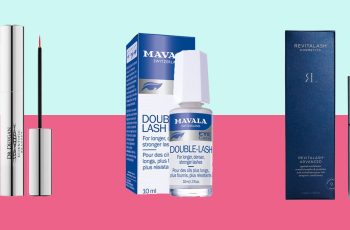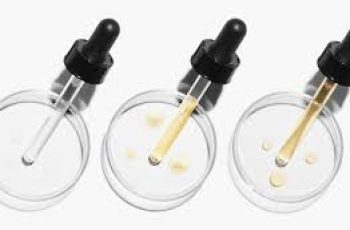
What are the Benefits of Copper Peptides for Skin?
Copper peptides are certainly having a moment, something many might find surprising as they are already a well-established skincare ingredient which has made its way into many formulations. So why have these hard-working powerhouses now suddenly gained our attention? Well, aside from the fact they are able to deliver impressive benefits to the skin, from wrinkle reducing to collagen boosting, you’ll also find that compared to other ingredients, copper peptides can be introduced into your everyday skincare routine with minimal hassle.
So, are you ready to find out more about all thing’s copper peptides? Let’s get stuck in, and don’t forget, if you want to know more about the benefits of copper peptides check out our dedicated page called the Skin School which explains in more detail about skincare ingredients.
How often should I use copper peptides?
You can use copper peptides twice a day if your skin is happy with using them. Although copper peptides are highly beneficial and a great addition to anyone’s everyday skincare routine. There is a downside and that is the fact that peptides can absorb into the skin very quickly. In theory this shouldn’t cause much trouble, but if you find your skin is prone to sensitivity or tends to be drier then this is something you need to keep in mind when using copper peptides. Luckily for us you’ll be hard pressed to find copper peptides in a raw form in their most potent state, but instead often formulated into various products.
What does copper peptides do for your skin?
Copper peptides provide a plethora of skin benefits, you’ll also find that they can work on different layers of the skin passed the epidermis. Here are some of the main benefits you can expect to find when using copper peptides in your regime.
Reduces the appearance of wrinkles, fine lines, and crow’s feet
Helps make the skin firmer with the boost of collagen in the skin
Fades hyperpigmentation and dark spots giving you an even skin tone
Provides antioxidant benefits to keep the skin surface protected from exposure to free radicals and other environmental damage
Stimulates hair growth and promotes general hair health
Soothe irritation and redness with anti-inflammatory properties
There you have some of the main benefits of copper peptides, as I mention quite often, ensure before applying any new formulas, ingredients, or products on the skin you perform a patch test for 24 hours. As for other potential side effects of using copper peptides, you’ll be happy to hear that almost all skin types can use copper peptides without a problem. Just ensure you are using these products correctly and follow the instructions on the packaging.
Can I use copper peptides everyday?
Yes, you can! You can apply copper peptides every day, even twice a day during your morning and evening evenings. You’ll often find that copper peptides are formulated into various products such as serums, balms, and moisturisers which results in them being applied to the skin at the later stages of your routine. Any active skin ingredients, such as glycolic acid, would have already been absorbed and rid the surface of any dead skin cell build-up allowing the formulation enriched with copper peptides to penetrate further into the dermis.
Something to consider is that even if you have introduced peptides correctly and have found them to work effectively on the skin, there is still a chance of you experiencing some form of reaction, such as redness, flushing of the skin, irritation, or rashes. If this occurs its best to stop using the product and consult with a dermatologist.
Can copper peptides cause wrinkles?
No, in fact, they actually do the opposite. By the time we reach the age of 25 years old, the production of collagen slows down rapidly. Copper peptides can step in with their unique cell communicating properties, they are able to tell the skin cells to kick start collagen and elastin production. With consistent use you’ll see a marked improvement on the overall look and feel of the complexion, with fine lines and wrinkles smoothed out and sagging skin becoming noticeably tighter.
As I have mentioned, you’ll find copper peptides are usually formulated into products such as serums and moisturisers both of which remain on the skin for a longer amount of time. This allows the peptides to penetrate the into the skin and get to work with formulas that remain on the skin and aren’t rinsed off, such as face washes and cleansers.
What can I not use with copper peptides?
As tolerable copper peptides are to work with other skincare ingredients, there are a few potent and well-loved ingredients that should be avoided such as, Retinol, tretinoin and other forms of retinoid Ascorbic acid, also known as vitamin C Alpha Hydroxy Acids (AHA) such as glycolic acid and lactic acid Beta Hydroxy Acid, such as salicylic acid Of course, it is perfectly understandable you would want to include all these effective ingredients in your routine. To avoid unwanted irritation or skin reactions, I would suggest you use them all on alternating times of days. Can I use copper peptides under eyes? Yes, you can! Just make sure you are using the correct formulation and avoid taking it up too high and close to the lash line. The skin around the eye is significantly thinner than the rest of the face leading to signs of ageing appearing more quickly. With the helping hand from copper peptides boosting collagen production and antioxidant properties combating any skin damage, your under-eye area will appear visibly improved and plumped. There you have a little more information about copper peptides and the benefits you can expect to see when using them in your everyday skincare routine. Don’t forget to come and follow us on Instagram for more skincare expert tips, product launches and exclusive discounts. If skin is your thing check out the latest episode of The Green Sofa over on the Procoal YouTube.
DQH Can I use salicylic acid first and then vitamin C?
It’s easy to create a skincare routine, but knowing how to use it is another thing entirely. In most cases, if you’re not getting the desired skin results, it could be due to the layering of conflicting ingredients. So, is it possible that salicylic acid and vitamin C are such ingredients? Or are these active ingredients the duo that’s been missing from your skincare routine? If you want answers, stick around because today we are going to explain the benefits of salicylic acid and vitamin C and how they can be used in your daily life.
What are the benefits of salicylic acid for skin?
Salicylic acid is one of the most commonly used beta hydroxy acids and is favored by many people with oily, acne-prone skin. This acid is derived from willow bark, and unlike its water-soluble relatives (called alpha-hydroxy acids), salicylic acid is oil-soluble, which means it can penetrate deeper into the lower layers of the skin. Once it reaches the lower layers, it can help unclog pores of excess sebum, dirt, bacteria, debris, and impurities. This results in clearer skin tones and greater definition.
Not only does salicylic acid benefit the underlying layers, but the outer surface of the skin benefits as well. When applied to the skin, salicylic acid removes the buildup of dead skin cells. This is accomplished by breaking the bonds that hold dead cells to the surface. Over time, this can cause the complexion to look dull and prone to acne, blackheads, and other blemishes.
If you’d like to learn more about salicylic acid and how it can improve your skin, check out this dedicated blog post from a beauty insider.
What are the benefits of vitamin C for skin?
Vitamin C is considered one of the most powerful antioxidants, which means it is very effective at fighting free radicals and preventing them from causing further skin damage. Examples of free radicals include pollution, central heating, UV rays and harsh climate. They attack proteins, fats and cell membranes as soon as they come into contact with the skin, causing signs of premature aging such as fine lines and wrinkles as well as hyperpigmentation, flaky patches of skin and loss of elasticity.
Many people usually prefer to use vitamin C in their morning routine as this ingredient gives the complexion a radiant glow. You’ll also find that vitamin C can target areas of hyperpigmentation, plumping the skin and reducing the appearance of fine lines and wrinkles.
The thing about vitamin C is that there are a lot of outdated studies going back to the 1950s that describe vitamin C as an unstable skin component. Thanks to improvements in modern technology, this is no longer the case as all products now contain a stable form of vitamin C.
Visit The Beauty Insider to learn more about vitamin C. So please check out our blog post.
Can I use salicylic acid first and then vitamin C?
Yes, you absolutely can. In fact, it’s thought that using salicylic acid before using vitamin C ensures it penetrates faster and works faster.
This is an efficient way to utilize two power sources, and the reason has to do with pH. For example, the skin’s natural pH is about 4.7, making it slightly acidic. Salicylic acid and vitamin C are also both acidic, and you’ll find that vitamin C is absorbed quickly into the skin. Therefore, using salicylic acid beforehand can increase the acidity of the skin and allow vitamin C to penetrate into the skin faster.
While this is considered an effective way to combine two powerful ingredients, you need to be aware of your skin type and how it reacts to certain active ingredients. Even people with perfect, normal skin can experience skin sensitivity and irritation. Therefore, always consult a doctor or dermatologist before using any new products on your skin.
It’s also important to follow skin application rules. In this case, you need to use the product correctly to ensure you get the best results for your skin. If you’re not sure what I mean, the basic rule for skin is to start with the thinnest consistency and work your way up to the thickest consistency. This prevents a barrier from forming on the surface, preventing other active ingredients from penetrating the skin.
Can I use salicylic acid at night and vitamin C in the morning?
Yes, absolutely, this is considered the most effective way to get returns without any adverse side effects. This is because there is enough time between applications to ensure that the skin’s pH levels return to balance.
You’ll also find that Vitamin C is rich in antioxidants and is perfect for use in the morning to ensure your skin is protected and looking its healthiest. Due to the small size of salicylic acid molecules, it is an acid that is able to reach the deepest parts of the skin. While this is effective at keeping skin clear, it also increases the risk of irritation and photosensitivity. Therefore, many people prefer to use powerful BHAs in their evening routine without exposure to UV rays, pollution, or harsh weather.
Warning: If you avoid using sunscreen every day, none of these ingredients will do what your skin needs. The combination of chemical peels and powerful ingredients increases the risk of further damage to the skin’s surface. Use SPF 50 every day to keep your skin protected and your lipid barrier healthy, even on cloudy days, keeping your skin in top condition.


